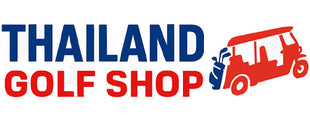When you buy a new driver or iron set off the rack, it usually comes with an “OEM” shaft, the stock option designed for mass-market appeal. These shafts are serviceable, but they’re not the same as the aftermarket versions used by tour pros or sold separately. For golfers in Thailand, understanding the difference between OEM and aftermarket shafts is critical to making the most of your equipment investment.

What Are OEM Shafts?
OEM stands for Original Equipment Manufacturer. These are the shafts pre-installed in drivers, fairways, and irons sold by brands like TaylorMade, Titleist, Ping, Mizuno, and Cobra.
Stock OEM shafts are built to a price point and aimed at the widest range of golfers possible. They often carry the same names as premium aftermarket shafts — Fujikura Ventus, Mitsubishi Tensei, Project X HZRDUS, but the construction is not identical.
The biggest differences are:
-
Materials – OEM versions may use lower-grade graphite to reduce costs.
-
Consistency – aftermarket shafts are tested to tighter tolerances.
-
Performance – OEM shafts may launch higher and spin more to fit the “average” golfer.
This doesn’t make OEM shafts “bad.” For beginners and high-handicappers, stock options can be forgiving and affordable. But they rarely unlock the full potential of a driver or iron head.
Good video on aftermarket vs OEM shafts
What Are Aftermarket Shafts?
Aftermarket shafts are the “real deal” — the tour-level versions sold separately and built with advanced materials and precise engineering. Brands like Fujikura, Mitsubishi, Graphite Design, Nippon, and BGT create shafts that are designed for performance, not cost savings.
Aftermarket shafts typically:
-
Use premium carbon fiber and advanced resin systems.
-
Deliver consistent flex, torque, and kick across every shaft.
-
Offer a wide range of weights and profiles to match specific swing types.
-
Perform exactly as advertised — tighter dispersion, optimized launch, and controlled spin.
They’re also what you’ll see in the bags of tour professionals. If a player is gaming a Ventus Black TR, it’s the aftermarket version — not the softer OEM stock shaft.

Why the Difference Matters in Thailand
Thailand’s playing conditions magnify the difference between OEM and aftermarket shafts.
-
Humidity & heat – Lower-grade OEM graphite can feel softer and lose stability in high humidity, while aftermarket materials stay consistent.
-
Wind – Courses in Pattaya and Phuket demand stable, low-spin shafts like aftermarket Fujikura Ventus or Graphite Design Tour AD.
-
Grainy greens – Precision approach shots need consistent launch angles that OEM shafts can’t always deliver.
For golfers serious about performance, aftermarket shafts are the difference between just “playing golf” and playing better golf.
The Cost Factor: Are Aftermarket Shafts Worth It?
OEM shafts are included in the price of the club, so they feel “free.” Aftermarket shafts in Thailand can range from 8,000–15,000 THB for a driver/fairway shaft and 12,000–15,000 THB for a set of iron shafts.
That’s a significant investment. But consider:
-
A premium driver head with the wrong shaft is wasted potential.
-
A mid-handicap golfer might save 2–3 shots a round with tighter dispersion.
-
Aftermarket shafts hold value better if you sell or upgrade later.
When you look at golf as a long-term game, a properly fitted aftermarket shaft is one of the smartest upgrades you can make.

Common OEM vs Aftermarket Examples
-
Fujikura Ventus Blue (OEM) – higher launch, softer tip, less stable at high swing speeds.
-
Fujikura Ventus Blue w/ VeloCore (Aftermarket) – stable across the entire shaft, lower spin, tour-level consistency.
-
Mitsubishi Tensei AV Raw (OEM) – good for average players, but softer profile.
-
Mitsubishi Tensei Pro (Aftermarket) – uses more advanced carbon fiber, tighter dispersion, tuned for aggressive swings.
-
Project X HZRDUS Smoke (OEM) – marketed with the same name, but lighter, higher spin.
-
Project X HZRDUS Small Batch (Aftermarket) – hand-rolled, tour-validated, stable under pressure.

Fitting Considerations in Thailand
If you’re thinking about moving to aftermarket shafts, a fitting is key. In Bangkok, some studios carry aftermarket demos, but selection is limited. More often, golfers work with online experts to choose based on swing speed, launch, spin, and preferred feel.
At ThailandGolfShop.com, aftermarket builds include:
-
Fujikura Ventus (Blue, Black, Red, TR).
-
Mitsubishi Diamana, Kai’li, Tensei Pro.
-
Nippon Modus³ for irons.
-
BGT Stability, ZNE, and Brava for putters, wedges, and drivers.
FAQs – OEM vs Aftermarket Shafts
Q: Do pros ever use OEM shafts?
No. Tour pros use aftermarket shafts built to exact specs.
Q: Are OEM shafts fake?
No, they’re genuine — but built differently from the aftermarket versions.
Q: Can beginners stick with OEM shafts?
Yes. OEM shafts are often designed to be more forgiving for slower swing speeds.
Q: Are aftermarket shafts available in Thailand?
Yes. ThailandGolfShop.com carries authentic Fujikura, KBS, LA Golf, True Temper Nippon, and BGT shafts with nationwide delivery.
Final Word
OEM shafts get you started. They’re built for the masses and often do a decent job. But if you’re serious about lowering scores in Thailand, aftermarket shafts are where performance truly lives. They deliver tighter dispersion, more consistent launch, and durability that holds up to Thailand’s hot, humid climate.
Investing in a premium shaft is the fastest way to unlock the potential of your driver, irons, wedges, or putter.
👉 Golf Shop Thailand specializes in aftermarket shafts and recommends them for any player serious about improving their game. Get the Ventus aftermarket shaft here.


